How AI is revolutionising HR: Preparing for the next phase of workplace evolution
Guest Authors, Jason Portelli, Managing Partner at Tech Pathfinder, and Troy Gread
Managing Partner at Workvergent
In today’s technologically saturated era, one can scarcely discuss industry transformations without mentioning the omnipresent force of Artificial Intelligence (AI).
This revolutionary tool has woven itself into the very fabric of diverse sectors, and the realm of Human Resources (HR) is no exception. A once traditional field is now a pulsating hub of tech-infused strategies, with AI playing the pivotal role of the conductor orchestrating a harmonious symphony of efficiency, accuracy, and innovation.
This challenges the expectations of technology as more than a simple time-saving tool, but a productivity-boosting sidekick that can automate and speed up day-to-day actions, enabling a far greater capacity for strategic and value-enhancing engagement in our workplace.
From the perspective of job seekers, AI can also streamline their job search now in ways we haven’t seen before. The days of sending generic resumes into the void are dwindling. With AI’s analytical capabilities, candidates can tailor their resumes to specific roles. Sophisticated tools dissect job descriptions, suggesting subtle but impactful modifications to ensure a resume doesn’t just match the job description, but stands out from the crowd.

Additionally, the digital platforms they lean on have become more intuitive. Powered by AI, these platforms analyze a candidate’s professional trajectory, skills, and even preferences, proposing opportunities that align seamlessly with the individual candidate. For the meticulous candidate wanting to perfect their interview technique, AI-driven virtual coaching tools provide rigorous training, critiquing nuances from articulation to posture.
This, in turn, raises questions of integrity and reliability for us as we review candidate applications – Are we hiring strong candidates, or not-so-strong candidates using the ‚performance enhancement‘ that is AI?
The true gain for organisations as we make our way into the mid 2020’s is the sheer array of ways in which AI is able to increase productivity on an individual worker level. Mundane, repetitive tasks that once consumed sizable chunks of an employee’s day are now able to be swiftly automated. Routine email sorting, basic data entry, even certain customer interaction protocols are now being managed by AI – The ramifications are profound.
Employees liberated from such tasks can pivot towards tasks of higher strategic value fostering innovation, and driving business growth. Moreover, with AI consistently streamlining processes, employees often report heightened job satisfaction, a factor directly correlating with increased retention rates. It’s not limited to knowledge workers either, with efficiencies across manufacturing, distribution, and retail being leveraged through the blend of AI, machine learning and robotics having a profound impact on those industries.
However, the integration of AI into the HR realm is a journey dotted with intricate challenges.
The unparalleled prowess of AI lies in its capacity to manage, dissect, and interpret massive volumes of data at lightning speeds. Yet, this strength casts a double-edged shadow. The sheer magnitude of data AI systems deal with, often encompassing deeply personal and confidential information, escalates the stakes.
The wide digital footprints left by employees, potential hires, and even past associates serve as a treasure trove for AI-enabled HR tools. These traces, ranging from past employment details, performance metrics, professional interactions, and sometimes even biometric data, are invaluable for making informed decisions. However, they simultaneously present tantalising targets for malicious interception. Data breaches, unauthorized access, or inadvertent leaks could compromise not just an individual’s privacy but can also jeopardize an organisation’s
reputation and integrity.
When this data includes Personal Identifiable Information (PII) – which can range from names, birth dates, licence and passport information, to more intricate data like behavioural patterns or biometric details – even some data such as a first name or an email address that would seem benign, can be combined with other data to form the missing piece a scammer or hacker needs to falsify someone’s identity – the consequences of a breach become even more severe.

Such breaches don’t just have financial implications in terms of potential lawsuits or regulatory fines, but they also erode the trust an employee or potential hire has in the organisation. Furthermore, with proprietary information at stake, there’s the added risk of sensitive internal strategies or product details falling into competitors‘ hands, threatening the very competitive edge of a company.
In addition, AI systems are designed to learn and evolve based on the data they are fed. This
means that the very essence of an organisation’s culture, biases (both explicit and implicit), and decision-making tendencies might be distilled and perpetuated by these systems. There’s a looming risk that, if unchecked, AI could inadvertently amplify existing biases, leading to not just ethically questionable decisions but also to potential missed opportunities in talent acquisition and management. In essence, while AI’s capability to manage and utilise vast amounts of data stands as its most potent asset in HR transformation, it is also its achilles‘ heel, demanding rigorous oversight, stringent security protocols, and continuous ethical evaluations.
To navigate these murky waters, we need to approach the future proactively. Organisations must craft robust, forward-thinking policies, ensuring the ethical and secure use of AI. Periodic audits, data handling protocols, and ethical use guidelines should be non-negotiable components of any AI integrated HR strategy. But policy-making alone won’t suffice. Regular training sessions, workshops, and awareness drives are crucial, ensuring that both HR professionals and the broader employee base comprehend the intricacies of the AI tools they interact with.
Integrating AI into your HR processes need not be a treacherous voyage into the unknown. A risk management approach, rooted in pragmatism and foresight, can ensure you’re equipped to harness AI’s potential while navigating its challenges.
Here are some practical steps
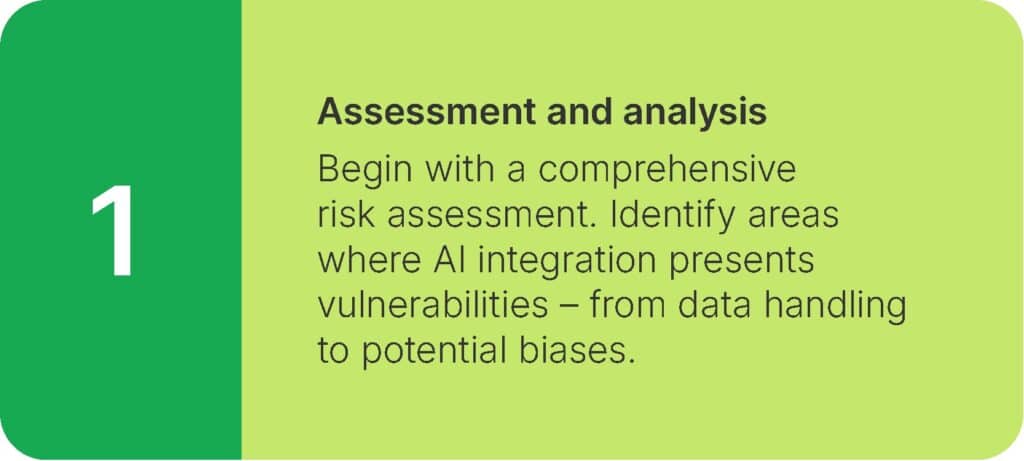
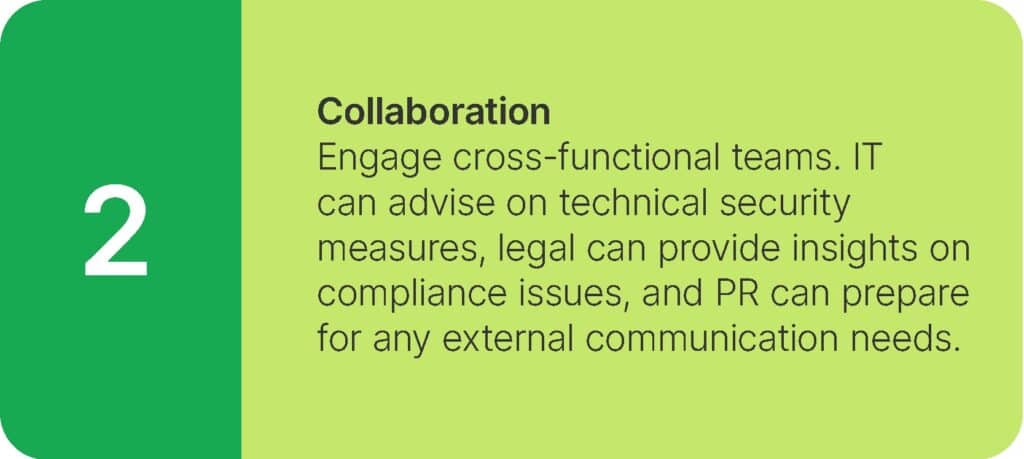
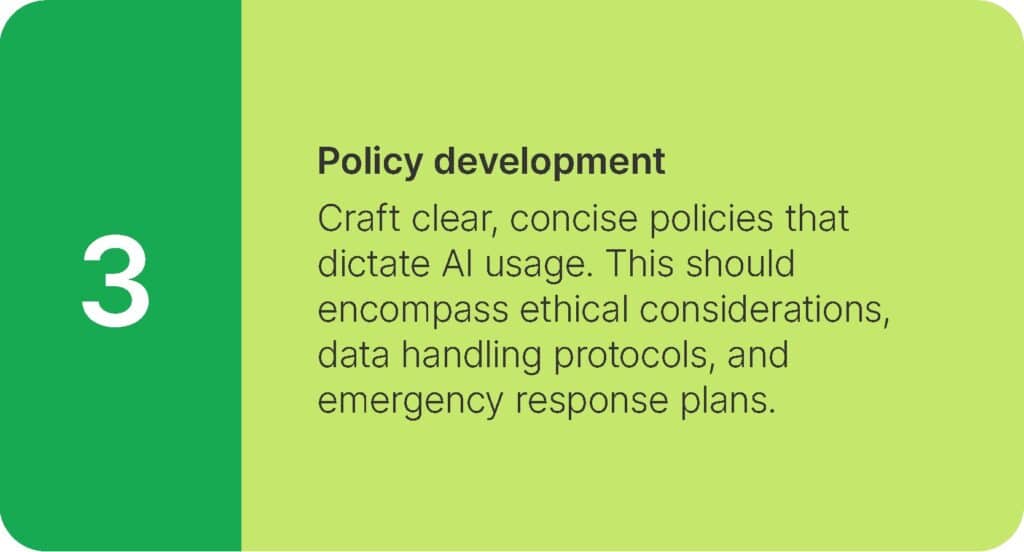
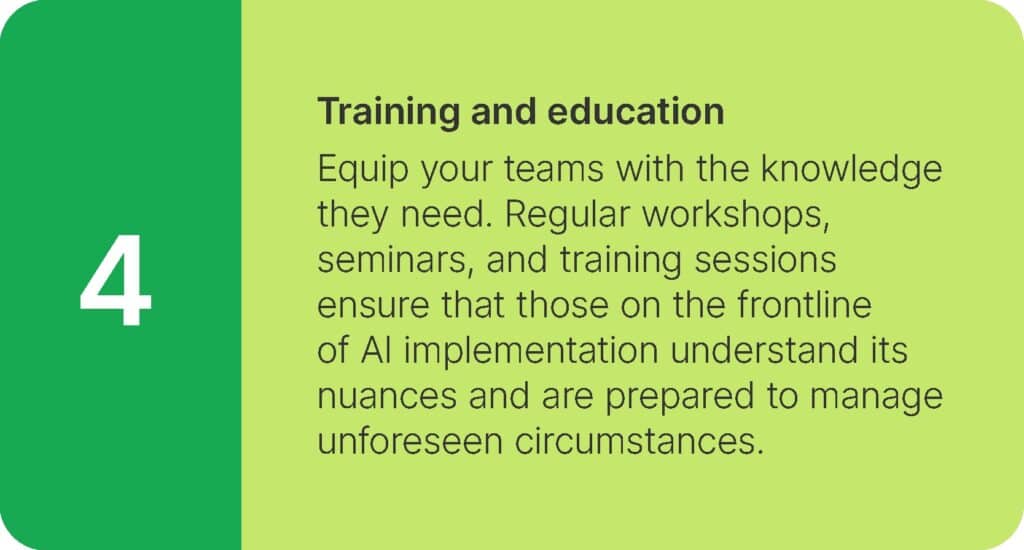
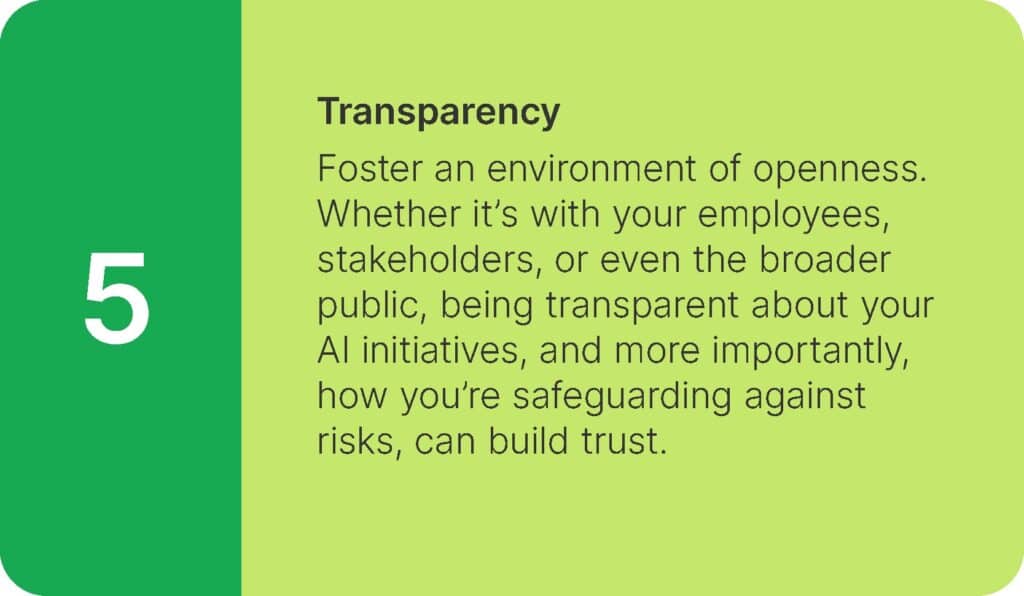
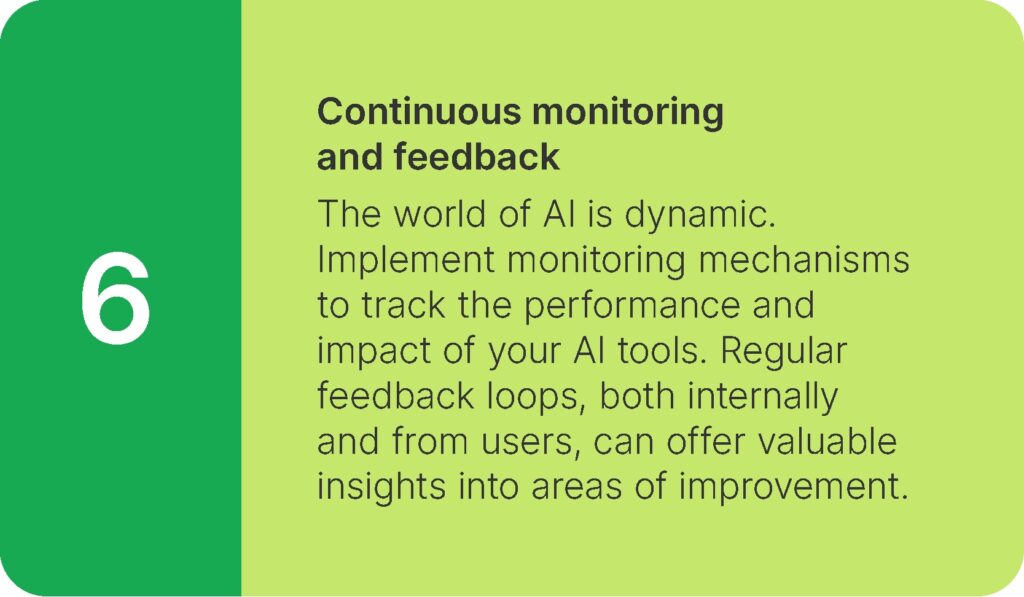
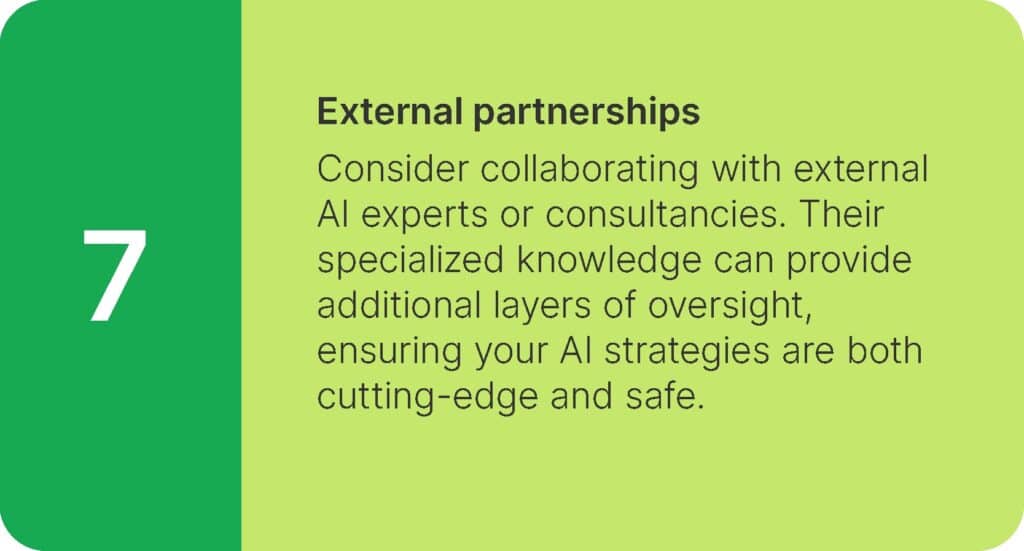
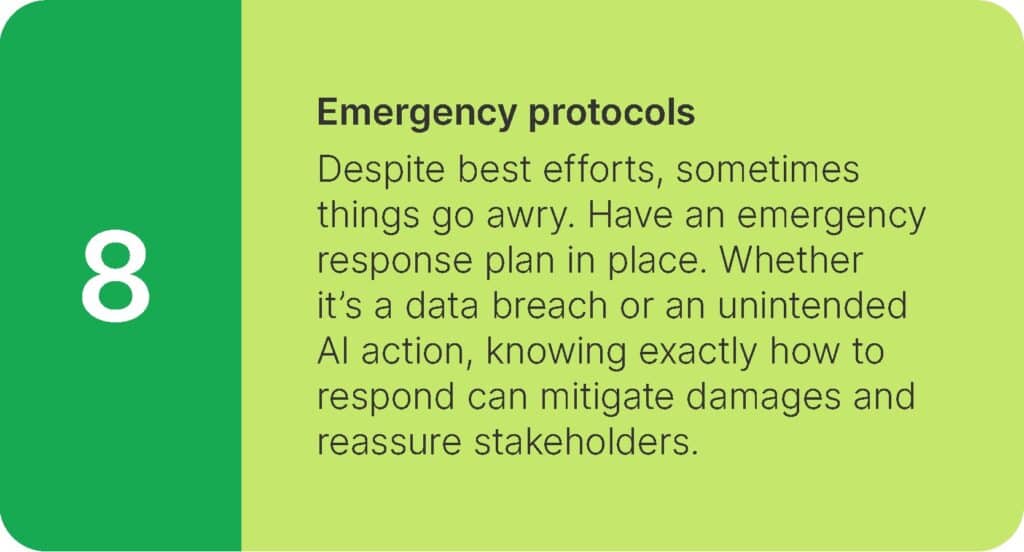
Peering into the not-so-distant future, the prospects of AI in HR are tantalizing. Seamless integration could blur the lines between conventional HR practices and tech-driven protocols. The intertwining of HR and AI is a narrative of transformative change, teeming with promise. As we sail these uncharted waters, a balanced, informed approach will be the linchpin, ensuring that the symbiosis between humans and machines in the HR space is both fruitful and harmonious.
Special thanks to Jason Portelli, Managing Partner at Tech Pathfinder, and Troy Gread Managing Partner at Workvergent for their insights into how AI is revolutionising HR. If you have any specific questions or if there’s anything else you’d like to discuss about the article or any related topics, feel free to let us know!
And if you would like to discuss your career or chat about the Australian HR market in general, please reach out to a member of our team today.



